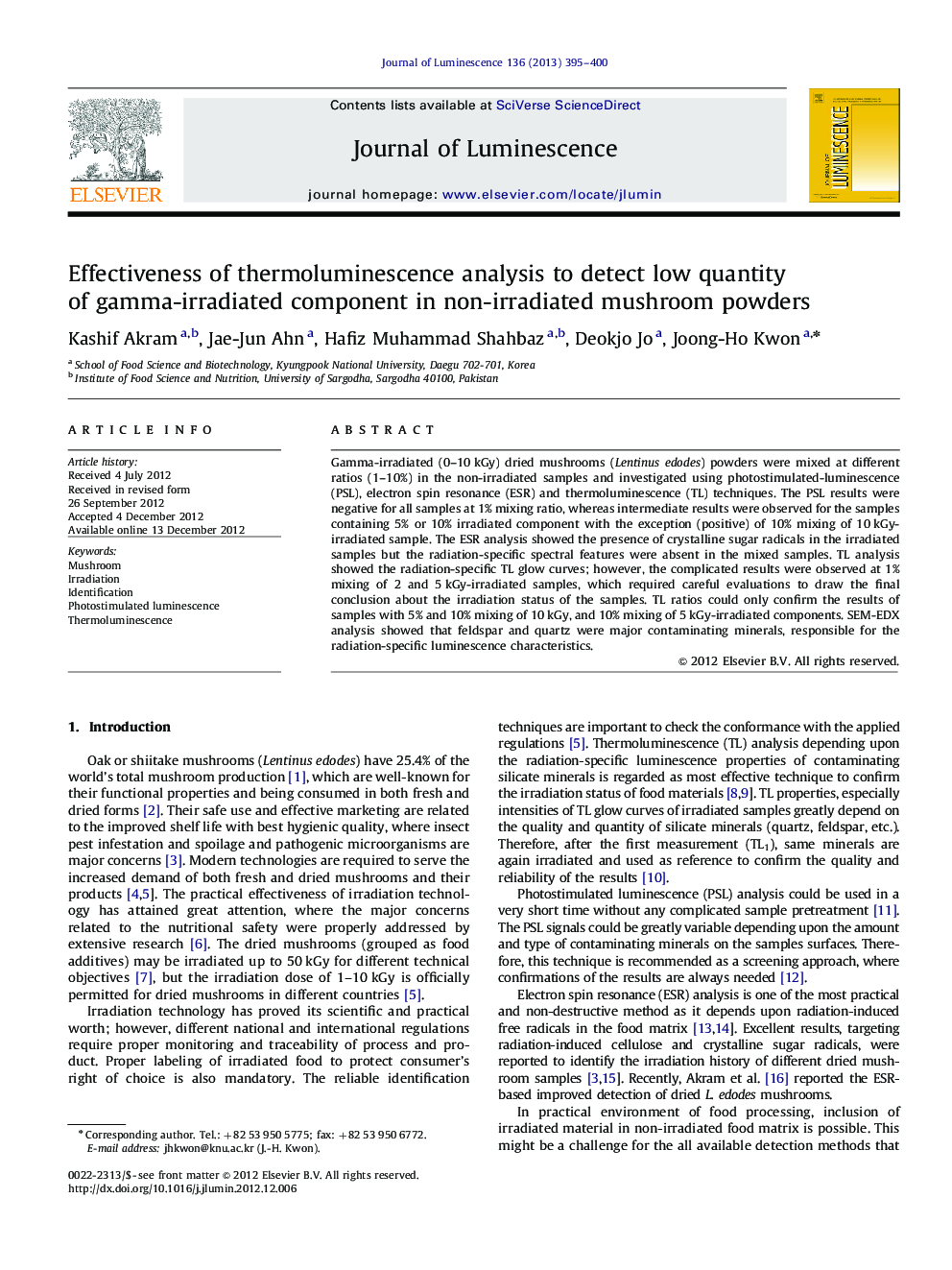| Article ID | Journal | Published Year | Pages | File Type |
|---|---|---|---|---|
| 5401002 | Journal of Luminescence | 2013 | 6 Pages |
Gamma-irradiated (0-10Â kGy) dried mushrooms (Lentinus edodes) powders were mixed at different ratios (1-10%) in the non-irradiated samples and investigated using photostimulated-luminescence (PSL), electron spin resonance (ESR) and thermoluminescence (TL) techniques. The PSL results were negative for all samples at 1% mixing ratio, whereas intermediate results were observed for the samples containing 5% or 10% irradiated component with the exception (positive) of 10% mixing of 10Â kGy-irradiated sample. The ESR analysis showed the presence of crystalline sugar radicals in the irradiated samples but the radiation-specific spectral features were absent in the mixed samples. TL analysis showed the radiation-specific TL glow curves; however, the complicated results were observed at 1% mixing of 2 and 5Â kGy-irradiated samples, which required careful evaluations to draw the final conclusion about the irradiation status of the samples. TL ratios could only confirm the results of samples with 5% and 10% mixing of 10Â kGy, and 10% mixing of 5Â kGy-irradiated components. SEM-EDX analysis showed that feldspar and quartz were major contaminating minerals, responsible for the radiation-specific luminescence characteristics.
⺠Detection of irradiated food is important to enforce the applied regulations. ⺠The effectiveness of TL analysis was investigated to detect irradiated component. ⺠The TL results were compared with those from PSL and ESR analysis. ⺠TL analysis was most effective to characterize the irradiation status of samples. ⺠SEM-EDX analysis showed feldspar and quartz as the main source of TL properties.
